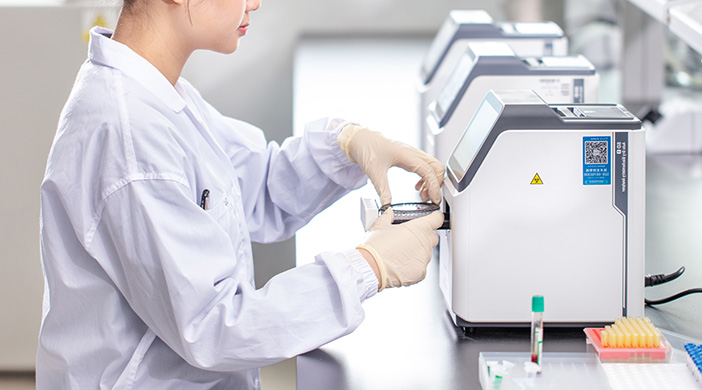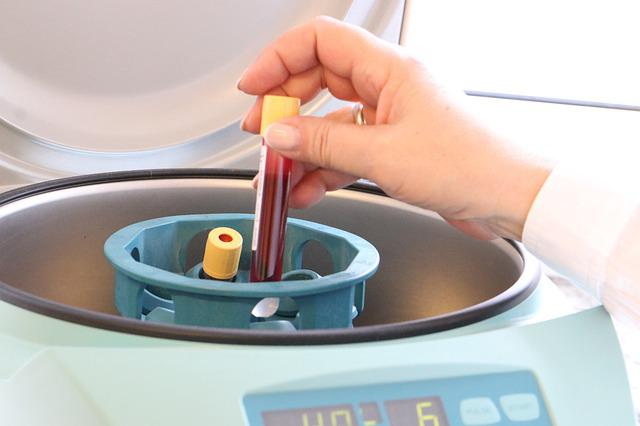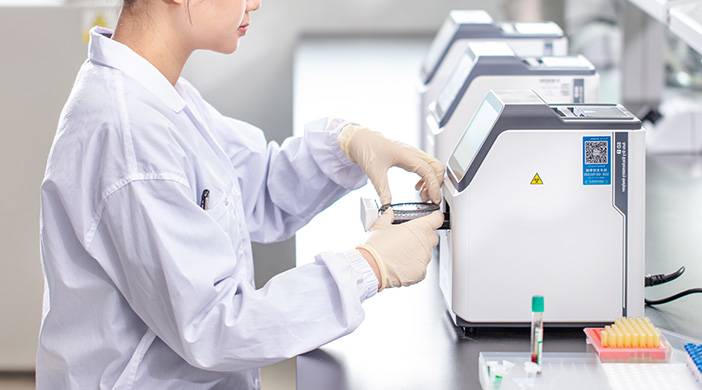release time:2021-09-15 15:04:06
The popularity of fully automated biochemical analyzers has greatly improved the speed of hospital testing. However, improper operation makes the biochemical test results of the test instrument error. Also yes, the convenience of the biochemical analyzer is meaningless. Even lead doctors to make the wrong diagnosis.
So what are the factors that affect the biochemical analyzer test results?
When choosing a kit, you should look at whether the reagents match the biochemistry instrument. Such as sample, reagent, wavelength, reaction temperature, measurement time and method, etc. Next, methodological evaluation should be performed before use. It is best to use kits that meet the requirements of the Clinical Laboratory Center of the Ministry of Health. The instructions for use should be read carefully before use. Parameters should also be entered according to the parameter design principles of the instrument.
Reagents beyond the expiration date or improperly stored make errors in calibration, resulting in systematic errors in test results. Also pay attention to the shelf life of reagents after opening the bottle. Choose the reagent package suitable for the laboratory workload to ensure the accuracy of the test results.
Calibration reagents are best used on the same day after opening. If the quantity is large and expensive, it should be frozen in time. However, they should not be frozen and thawed repeatedly. Quality control products should also be frozen in time after thawing, so as not to affect the measurement results.
All of the above will directly cause light scattering. This affects the colorimetric results of the biochemical analyzer.
The cleanliness of the reaction cup of the biochemical analyzer will also directly affect the accuracy of the analysis results. The light transmission rate of each reaction cup is different. New reaction cups have a small difference. Used reaction cups have a larger difference. The longer the reaction cup is used, the greater the impact. In addition to affecting the transmittance of a dirty reaction cup, the residue inside the cup is also involved in the reaction with the added reagent. This doubly affects the test results.
In addition to the above reasons, improper operation of the operator can also cause inaccurate results. Therefore, testers should be aware of the factors affecting the injection of automatic biochemical analyzer itself. At the same time, they should strictly regulate their own operation to get accurate test results.


2023-04-24
Discover why Seamaty's automated hematology analyzers are the best choice for your medical practice. Read about their efficiency, compatibility, user-friendliness, and low cost of operation, as well as the answers to frequently asked questions about automated hematology analyzers.

2021-09-24
Most fully automatic biochemical analyzers currently use dual reagents to detect samples. Reagents R1, R2 aspirate and spit out, generally equipped with only one set of reagent needles respectively. When the reagent needle is incompletely cleaned, or when adhesion increases, residual reagents may have an impact on the next pro-test results.

2021-09-03
Microfluidic technology has broad application prospects in medical testing, in vitro diagnosis, drug screening, genetic testing, biochemical analysis, forensic identification, health quarantine, and environmental monitoring of detection.